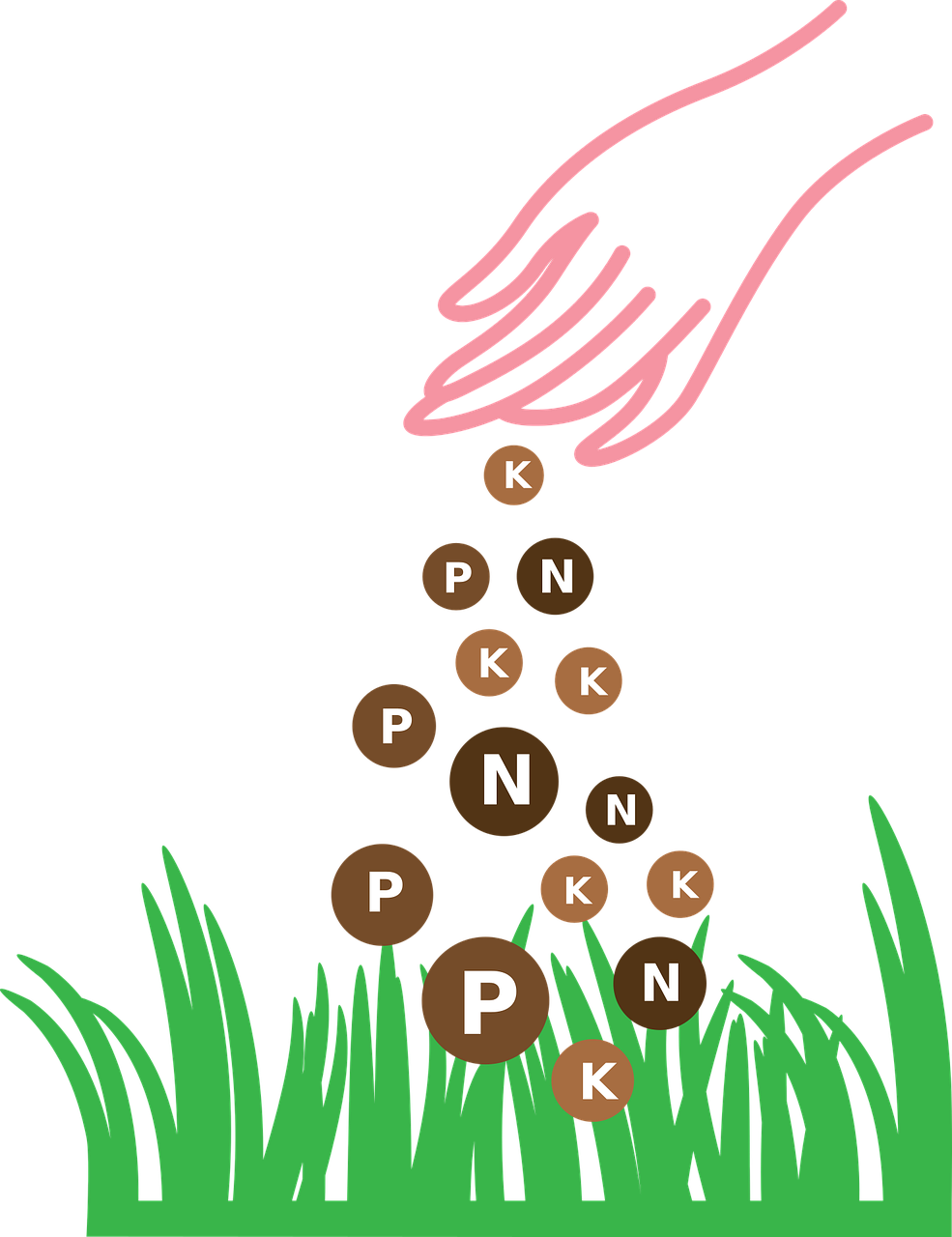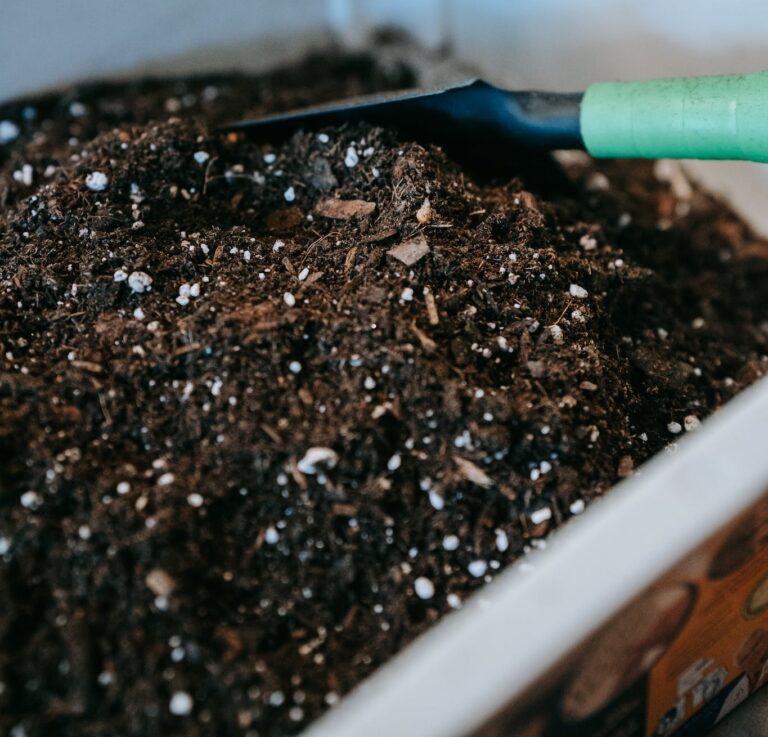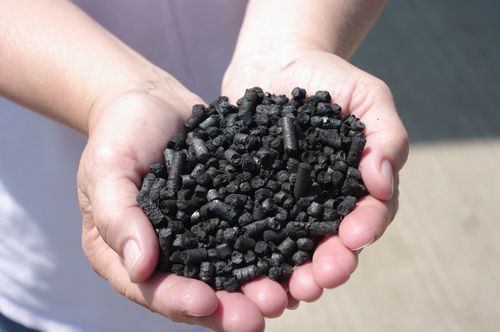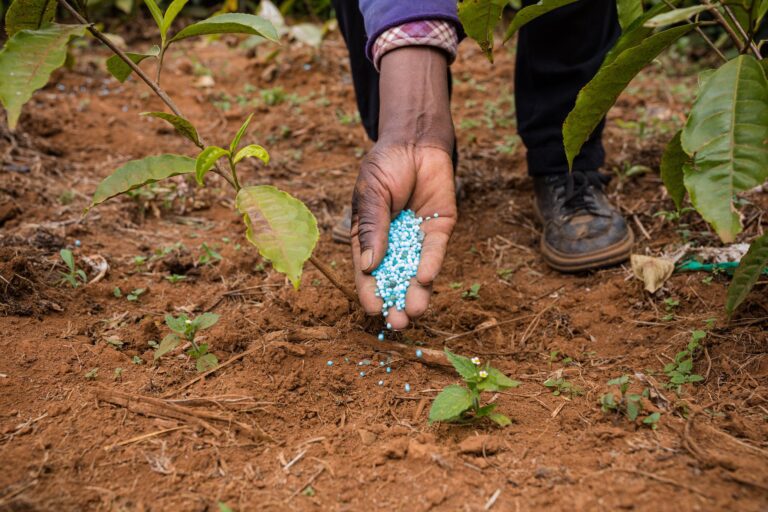As the saying goes, ‘One man’s trash is another man’s treasure.’ This age-old adage can be applied to the world of gardening, where the waste we discard can be transformed into a valuable resource: compost.
But can compost truly replace fertilizer? The answer may surprise you. In this discussion, I will explore the benefits of compost, its impact on soil health, and how it compares to synthetic fertilizers.
By the end, you’ll have a better understanding of whether compost can indeed stand as a worthy substitute. So, let’s dig deeper and uncover the truth behind this green revolution.
The Benefits of Compost
Compost offers numerous benefits, making it a valuable addition to any gardening or farming practice. The benefits of compost can be attributed to the composting process, which involves the decomposition of organic matter into a nutrient-rich soil amendment.
One of the primary advantages of using compost is its ability to improve soil structure. Compost contains a diverse range of organic materials, such as leaves, grass clippings, and food waste, which break down over time and create a crumbly, well-draining soil. This improved soil structure allows for better root penetration, water infiltration, and air circulation, ultimately promoting healthier plant growth.
Another benefit of compost is its ability to enhance soil fertility. As organic matter decomposes, it releases essential nutrients, including nitrogen, phosphorus, and potassium, into the soil. These nutrients are vital for plant growth, and their availability in compost helps to replenish soil fertility naturally. In addition to providing nutrients, compost also acts as a natural slow-release fertilizer, releasing nutrients gradually over time, which reduces the risk of nutrient leaching and ensures a steady supply of nutrients for plants.
Furthermore, compost helps to improve soil moisture retention. The organic matter in compost has the capacity to absorb and hold water, reducing water runoff and promoting water availability for plants. This is particularly beneficial in areas with limited water resources or during dry periods.
Lastly, compost aids in weed control. When applied as a mulch, compost forms a protective layer that prevents weed seeds from germinating and reduces weed growth. Additionally, compost can suppress certain weed species by altering soil conditions and competition for resources.
Understanding Soil Health
To gain a comprehensive understanding of soil health, it’s essential to analyze its physical, chemical, and biological properties.
In terms of soil microbiology, studying the microbial communities present in the soil is crucial. These microorganisms play a vital role in soil nutrient cycling, as they decompose organic matter and release essential nutrients for plant uptake. Furthermore, they contribute to the overall structure and stability of the soil, affecting its water-holding capacity, aeration, and nutrient availability.
Soil nutrient cycling is the process by which nutrients are transformed and recycled within the soil system. It involves the uptake of nutrients by plants, their incorporation into organic matter, the release of nutrients through microbial decomposition, and their subsequent availability for plant uptake. Understanding the dynamics of soil nutrient cycling is essential for sustainable agriculture and ecosystem functioning. It allows us to optimize nutrient management practices, minimize nutrient losses, and enhance soil fertility.
Compost Vs. Synthetic Fertilizers
What are the key differences between compost and synthetic fertilizers? When comparing compost and synthetic fertilizers, several important distinctions arise. These disparities have implications for soil health, plant growth, and the environment. Here are five key differences to consider:
- Nutrient content: Compost is a natural product derived from organic materials, such as food scraps and yard waste. It contains a variety of essential nutrients, including nitrogen, phosphorus, and potassium. In contrast, synthetic fertilizers are manufactured and typically contain concentrated amounts of specific nutrients.
- Nutrient release: Compost releases nutrients slowly over time as it decomposes, providing a steady supply for plants. Synthetic fertilizers, on the other hand, often release nutrients quickly, leading to rapid plant growth but also potentially leaching excess nutrients into the environment.
- Soil health: Compost improves soil structure, promotes microbial activity, and enhances water retention, ultimately fostering healthy plant growth. Synthetic fertilizers, however, don’t offer the same benefits and can even harm soil health if used excessively or incorrectly.
- Environmental impact: The production and use of synthetic fertilizers contribute to environmental issues such as water pollution and greenhouse gas emissions. Compost, on the other hand, is a sustainable and environmentally friendly option, as it reduces waste and improves soil quality.
- Long-term effects: Over time, continuous use of synthetic fertilizers can lead to soil degradation and nutrient imbalances. Compost, on the other hand, helps build and maintain long-term soil fertility, reducing the need for synthetic inputs.
Considering these differences, it becomes clear that compost offers numerous advantages over synthetic fertilizers, both for plant health and environmental sustainability.
Enhancing Nutrient Availability
Enhancing nutrient availability is a crucial aspect of promoting optimal plant growth and maximizing the benefits of soil amendments. By ensuring that plants have access to an adequate supply of essential nutrients, we can optimize their growth and overall health. One effective way to enhance nutrient availability is through the use of compost. Compost contains a wide range of organic matter that can improve soil structure and increase nutrient retention. This organic matter acts as a slow-release fertilizer, gradually releasing nutrients into the soil for plant uptake.
To better understand the impact of compost on nutrient availability, let’s examine a comparison between compost and synthetic fertilizers:
| Aspect | Compost | Synthetic Fertilizers |
|---|---|---|
| Nutrient Content | Contains a balanced mix of macro and micronutrients | Usually contains specific nutrients in concentrated forms |
| Nutrient Release | Nutrients are released slowly over time | Nutrients are quickly available for plant uptake |
| Soil Health | Improves soil structure and microbial activity | May have negative effects on soil health if overused |
| Environmental Impact | Environmentally friendly, reduces reliance on synthetic fertilizers | May contribute to water pollution and soil degradation |
As seen in the table, compost offers several advantages in terms of enhancing nutrient uptake and optimizing plant growth. Its slow-release nature ensures a steady supply of nutrients, reducing the risk of nutrient leaching and promoting long-term plant health. Additionally, compost improves soil structure and supports beneficial microbial activity, further enhancing nutrient availability. By incorporating compost into our agricultural practices, we can maximize the benefits of soil amendments while minimizing environmental impact.
Improving Soil Structure and Texture
When it comes to improving soil structure and texture, two key points to consider are enhanced soil fertility and increased water retention.
Compost and fertilizer both play a crucial role in achieving these outcomes. Compost, with its organic matter content, improves soil structure by providing essential nutrients and promoting microbial activity.
On the other hand, fertilizer supplies specific nutrients to support plant growth.
Together, these factors contribute to a healthier soil environment that can support optimal plant growth and development.
Enhanced Soil Fertility
Improving soil structure and texture is a crucial aspect of enhancing soil fertility. By enhancing the physical properties of the soil, we can create an environment that promotes optimal root growth and nutrient uptake, leading to increased crop yield.
Sustainable agriculture relies on the ability of the soil to retain water and nutrients, which can be achieved through improving soil structure and texture. Here are five key ways in which we can enhance soil fertility:
- Incorporating organic matter such as compost, which improves soil structure and increases nutrient availability.
- Implementing cover cropping practices to improve soil aggregation and water infiltration.
- Minimizing soil compaction through reduced tillage or the use of appropriate machinery.
- Balancing soil pH levels to create an optimal environment for nutrient availability.
- Managing soil erosion through the use of erosion control measures to prevent nutrient loss.
Increased Water Retention
To optimize water retention in soil and improve its structure and texture, incorporating organic matter such as compost proves to be an effective method. The addition of compost to soil enhances its ability to retain moisture, leading to improved plant growth and overall environmental sustainability.
Compost acts as a sponge, absorbing and holding water within its porous structure. As a result, the soil retains moisture for longer periods, reducing the need for frequent irrigation and conserving water resources. This increased water retention not only benefits plants by providing a consistent water supply but also helps in maintaining a healthy soil structure.
The improved soil texture resulting from the addition of compost allows for better infiltration and drainage, preventing waterlogging and promoting aeration. Ultimately, the use of compost as a soil amendment contributes to improved plant growth while promoting the long-term sustainability of our environment.
Promoting Beneficial Soil Microorganisms
Studies have consistently demonstrated the ability of compost and fertilizer to enhance the proliferation of beneficial soil microorganisms. These microorganisms play a crucial role in maintaining soil health and fertility. By promoting beneficial microorganism interactions, we can effectively manage the soil microbiome and improve crop productivity.
Here are five key ways in which compost and fertilizer contribute to the promotion of beneficial soil microorganisms:
- Increased organic matter: Compost and fertilizer provide a rich source of organic matter, which serves as food for microorganisms, stimulating their growth and activity.
- Nutrient availability: Compost and fertilizer supply essential nutrients to the soil, ensuring that microorganisms have access to the resources they need to thrive.
- pH balance: Compost can help regulate soil pH, creating a favorable environment for beneficial microorganisms while inhibiting the growth of harmful pathogens.
- Disease suppression: Certain microorganisms present in compost have the ability to suppress soil-borne diseases, protecting plant health and reducing the need for chemical interventions.
- Improved soil structure: Compost enhances soil aggregation, creating pore spaces that facilitate air and water movement. This allows microorganisms to access oxygen and moisture, promoting their activity.
Understanding the role of compost and fertilizer in promoting beneficial soil microorganisms is essential for sustainable soil management. By harnessing the power of these natural inputs, we can optimize soil health and maximize agricultural productivity.
Compost Tea: A Liquid Fertilizer Alternative
Compost tea, a liquid fertilizer alternative, offers a research-based solution for enhancing soil fertility and promoting plant growth. Compost tea brewing involves the extraction of beneficial microorganisms and nutrients from compost into water. This process creates a nutrient-rich liquid that can be applied directly to plants or soil.
The brewing process typically involves aeration, which promotes the growth of aerobic microorganisms. These microorganisms break down organic matter in the compost, releasing nutrients in a form that can be readily absorbed by plants.
Compost tea application can be done through foliar spraying or soil drenching. Foliar spraying involves applying compost tea directly onto the leaves of plants. This method allows for rapid nutrient absorption and can enhance plant defenses against pests and diseases. Soil drenching, on the other hand, involves pouring compost tea directly into the soil around the plant’s root zone. This method allows for the slow release of nutrients into the soil, providing long-term benefits to plants.
Research has shown that compost tea can improve soil structure, enhance nutrient availability, and stimulate plant growth. It can also increase the diversity and abundance of beneficial microorganisms in the soil, leading to improved soil health. However, it’s important to note that the effectiveness of compost tea may vary depending on factors such as compost quality, brewing techniques, and application methods.
Therefore, it’s crucial to follow research-based guidelines and consult experts when using compost tea as a liquid fertilizer alternative.
Compost Application Techniques
Applying compost to soil requires careful consideration of various techniques to ensure optimal nutrient distribution and long-term benefits for plant growth. Here are five key techniques to keep in mind when applying compost:
- Compost application timing: Timing is crucial when it comes to applying compost. It’s best to incorporate compost into the soil before planting or during the early stages of plant growth. This allows the compost to break down and release nutrients gradually, providing a steady supply of nourishment to the plants.
- Compost depth: The depth at which compost is applied can affect its effectiveness. Generally, a layer of compost that’s about 1-2 inches thick is sufficient for most plants. However, for heavy feeders or nutrient-deficient soils, a thicker layer may be necessary.
- Compost incorporation methods: There are various methods to incorporate compost into the soil, including top-dressing, trenching, and double digging. The choice of method depends on factors such as the type of plants being grown and the condition of the soil.
- Compost moisture management: Proper moisture management is essential for compost to decompose effectively. The compost should be moist, but not overly wet. Regular monitoring and occasional watering may be required to maintain the ideal moisture level.
- Composting troubleshooting: It’s important to address any issues that may arise during the composting process. Troubleshooting common problems such as foul odors, excessive heat, or slow decomposition can help ensure the production of high-quality compost.
Considerations for Using Compost
Considerations for the use of compost in soil fertility management include understanding the nutrient content, application rates, and potential benefits for plant growth. Compost is a valuable organic material that can enhance soil health and provide essential nutrients to plants. However, its effectiveness depends on various factors such as compost quality and the composting process.
When considering the use of compost, it is important to assess its nutrient content. Compost typically contains a range of macro and micronutrients, including nitrogen, phosphorus, potassium, calcium, magnesium, and trace elements. The nutrient content can vary depending on the feedstock used for composting. Conducting a nutrient analysis of the compost can help determine its suitability for specific crops and soil conditions.
Another consideration is the application rate of compost. This will depend on the nutrient requirements of the plants, soil characteristics, and the desired outcome. Applying compost at the recommended rate ensures that plants receive adequate nutrients without causing nutrient imbalances or excessive nutrient runoff.
In addition to nutrient content and application rates, understanding the composting process is essential. The composting process involves the decomposition of organic materials, such as food waste, yard trimmings, and manure, under controlled conditions. Proper composting techniques, such as maintaining the right temperature, moisture levels, and oxygen supply, are crucial for producing high-quality compost that is free from pathogens and weed seeds.
Considerations for Using Compost:
| Compost Quality | Composting Process |
|---|---|
| Nutrient content | Temperature control |
| Purity | Moisture management |
| Stability | Proper aeration |
| pH level | Pathogen and weed seed control |
| Maturity | Time duration |
Case Studies: Successful Compost Integration
Through a series of carefully conducted case studies, successful integration of compost into soil fertility management practices has been demonstrated. These case studies provide valuable insights into the benefits and effectiveness of compost as a replacement for traditional fertilizers.
Here are five key findings from these successful case studies:
- Increased soil organic matter: The application of compost resulted in a significant increase in soil organic matter content. This improved soil structure, water-holding capacity, and nutrient availability.
- Enhanced nutrient cycling: Compost integration promoted the cycling of nutrients in the soil, leading to improved nutrient uptake by plants. This reduced the need for additional fertilizer applications.
- Weed suppression: Compost application resulted in weed suppression, reducing the competition for nutrients and light. This led to healthier plant growth and higher crop yields.
- Disease suppression: The addition of compost to soil showed promising results in disease suppression. It enhanced the natural defense mechanisms of plants, reducing the incidence of diseases and improving overall plant health.
- Environmental benefits: Compost integration contributed to the reduction of chemical fertilizer usage, minimizing the release of harmful pollutants into the environment. It also helped in carbon sequestration, contributing to climate change mitigation efforts.
These case studies demonstrate the successful integration of compost into soil fertility management practices, highlighting its potential as a sustainable alternative to traditional fertilizers.
Conclusion
In conclusion, research shows that compost can indeed replace synthetic fertilizers in agricultural practices.
Compost offers numerous benefits, such as improving soil health, enhancing nutrient availability, and promoting better soil structure and texture.
Compost tea also serves as a viable liquid fertilizer alternative.
By utilizing proper compost application techniques and considering individual factors, farmers can successfully integrate compost into their practices.
This research supports the potential for compost to be a sustainable and effective replacement for synthetic fertilizers.






